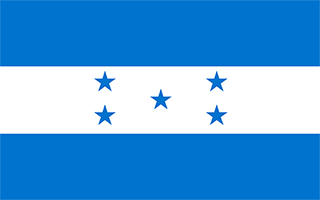Facts and Data
Webpages:
Official Unesco Page
Protectedplanet.net
Basis Data:
Unesco World heritage since: 1982
Size of heritage: 350,000 ha
- Buffer zone: 150,000 ha
Coordinates:
Longitude: -83,325°
Latitude: 15,744°
Summary
Located on the watershed of the Río Plátano, the reserve is one of the few remains of a tropical rainforest in Central America and has an abundant and varied plant and wildlife. In its mountainous landscape sloping down to the Caribbean coast, over 2,000 indigenous people have preserved their traditional way of life.
Location on Map
Show bigger map on Openstreetmap
Río Plátano Biosphere Reserve: A Jewel of Biodiversity in Honduras
The Río Plátano Biosphere Reserve, located in the northeastern region of Honduras, in an area known as the “Mosquitia Hondureña,” is a UNESCO World Heritage site that encompasses a vast expanse of tropical rainforest, rivers, and diverse ecosystems. Spanning over 800,000 hectares, this biosphere reserve is not only a sanctuary for an incredible array of flora and fauna but also holds great historical and cultural significance.
History
The history of the Río Plátano Biosphere Reserve dates back thousands of years. It has been inhabited by indigenous communities, such as the Miskito, Pech, and Tawahka, who have maintained a deep connection with the land and its resources. These communities have played a crucial role in the preservation of the reserve, as their traditional knowledge and sustainable practices have contributed to its conservation.
In 1982, the Río Plátano Biosphere Reserve was designated as a UNESCO World Heritage site due to its exceptional biodiversity and cultural value. It was recognized as an area of global importance, deserving of protection and preservation for future generations.
Current State
The Río Plátano Biosphere Reserve is a haven for biodiversity, housing an astonishing variety of plant and animal species. It is home to over 2,000 species of plants, including rare and endemic ones, making it one of the most biologically diverse regions in Central America. The reserve also provides habitat for numerous endangered and threatened species, such as jaguars, tapirs, and scarlet macaws.
However, the Río Plátano Biosphere Reserve faces several challenges that threaten its delicate ecosystems. Illegal logging, poaching, and encroachment by settlers pose significant threats to the reserve's integrity. These activities not only disrupt the natural balance but also endanger the livelihoods of the indigenous communities who depend on the forest for their sustenance.
Efforts are being made to address these challenges and ensure the long-term conservation of the Río Plátano Biosphere Reserve. The Honduran government, in collaboration with international organizations and local communities, has implemented various conservation initiatives. These include strengthening law enforcement, promoting sustainable land use practices, and raising awareness about the importance of preserving this unique heritage site.
Additionally, ecotourism has emerged as a potential solution to support the conservation efforts in the Río Plátano Biosphere Reserve. Responsible tourism practices, such as guided tours and community-based initiatives, allow visitors to experience the reserve's natural wonders while contributing to the local economy and raising awareness about the need for conservation.
The Río Plátano Biosphere Reserve stands as a testament to the remarkable biodiversity and cultural heritage of Honduras. Its preservation is not only crucial for the protection of unique ecosystems but also for the well-being of the indigenous communities who have lived in harmony with the land for generations. By safeguarding this natural treasure, we can ensure a sustainable future for both nature and humanity.
